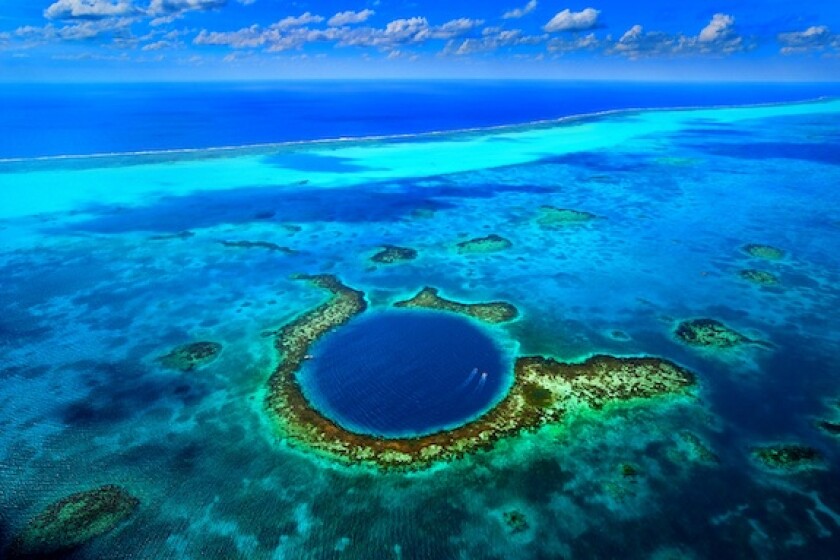Whenever an ESG debt capital markets transaction catches the attention of the mainstream press, it tends to put noses out of joint among those who did not participate.
Belize’s restructuring, in which the country is using a DFC-guaranteed blue bond to fund a sub-par buyback of its debt while simultaneously committing money to marine conservation, is no exception.
One banker called it a “joke”, arguing that Belize should not get special treatment, given that it is already financially incentivised to conserve its coral reefs — a key source of tourism.
Some say the blue angle is being over-egged. After all, the blue bond is $364m in size, but the proceeds going towards the endowment fund for marine conservation are just $23.4m. Even adding in all the deal’s side projects, the DFC estimates there will be a total of just $180m channelled to blue projects.
Moreover, there appears to be some resentment that bondholders such as GMO and ABRDN are garnering free publicity for apparently selflessly taking a financial hit in order to save the planet.
There was little evidence that Belize’s coral reef was a priority for these investors until they were offered 55 cents on the dollar in cash for a bond that — after four restructurings in 15 years — appeared unlikely to ever be repaid.
Sea greenium
But arguments of this kind could be levelled against almost every ESG bond ever issued. Corporate issuers of green use of proceeds bonds, in particular, rarely allocate the funds to projects that are not also financially beneficial to them, and could just as easily fund those projects with normal bonds — the so-called greenium, though hotly discussed, is negligible.
Meanwhile, calculating the ESG credentials of most major institutional investors is quite the minefield — despite their efforts to talk up their own altruism.
What makes Belize’s restructuring a real achievement is its impact on the country’s debt profile. It will cut government debt by around 12% of GDP. And as pleas by emerging markets politicians at COP26 show, a crucial challenge in the climate battle is ensuring that developing countries are able to afford to implement the policies that will make their countries more resilient to the effects of climate change and contribute to reducing emissions.
Mitu Gulati, a legendary scholar in the world of sovereign debt — and frequent collaborator of Lee Buchheit, who was advising Belize — posits in a blog that the blue aspect of the restructuring enabled Belize to achieve a 55 buy-back price rather than the 60 cents that bondholders were looking for. He believes that “playing the coral reef card” forced investors to live up to their ESG credentials by accepting a bigger loss.
If that’s the case, it's more than arguable that we have witnessed the world’s largest ever greenium — or should that be "sea greenium"? A five point discount on the tender price would mean the blue angle alone knocked over $25m off the country’s debt burden.
Singing the blues
That’s not the only effect, of course. Without the marine conservation commitments, the Nature Conservancy would not have been involved. The restructuring was carried out via its Blue Bonds for Conservation debt swap programme.
Moreover, a plain vanilla restructuring would not have interested US development bank DFC, which was a crucial piece of the puzzle, since its guarantee encouraged blue bond arranger Credit Suisse to backstop the deal with committed capital.
Thanks to the blue bond’s Aa2 rating — a result of the DFC’s guarantee, since Belize has a triple-C grade credit profile — the cost of debt is also lower.
Before the restructuring, Belize bond yields were in the high teens. The blue bond has a coupon step-up structure that will start at 1.6% and reach a maximum of 4.47%.
Whether this is enough to set Belize on a sustainable debt path is an open question. Moody’s is sceptical while debt and development network Eurodad is not having it, arguing that Belize's ability to achieve the fiscal performance assumed by the blue bond programme is “highly questionable on several grounds”.
Such doubts are legitimate. But Belize indisputably has a much better chance of reaching fiscal sustainability with $250m less debt — and lower interest rates — than it would otherwise have.
Even if you doubt Professor Gulati’s assertion that investors gave up so much during negotiations, it is clear is that the deal brought a far better outcome than the likely alternative — yet another tortuous negotiation process that does little for the size of Belize’s debt burden — as occurred in the four previous restructurings.
Rising tide
Even sceptics must admit that Belize has derived genuine financial benefits from its venture into blue bonds that few if any other ESG bond issuers can boast. This — and the resultant headlines — will bring much more awareness to the topic than a couple of basis points of greenium. And is that not a bit part of what ESG capital markets are supposed to be all about?
Ecuador is understood to have wanted something similar in its own restructuring processes in 2020, but gained little traction with investors. Emboldened by Belize’s deal, the Central American country's market-friendly president, Guillermo Lasso, revived the debt for conservation swap idea at COP26 in connection with a pledge to extend the protected area around the Galapagos Islands.
Argentina, of course, jumped on the bandwagon — and so it should.
Debt for nature swaps may not save the world, but if they ease the path to climate change and mitigation for developing countries, they must be doing something right.





